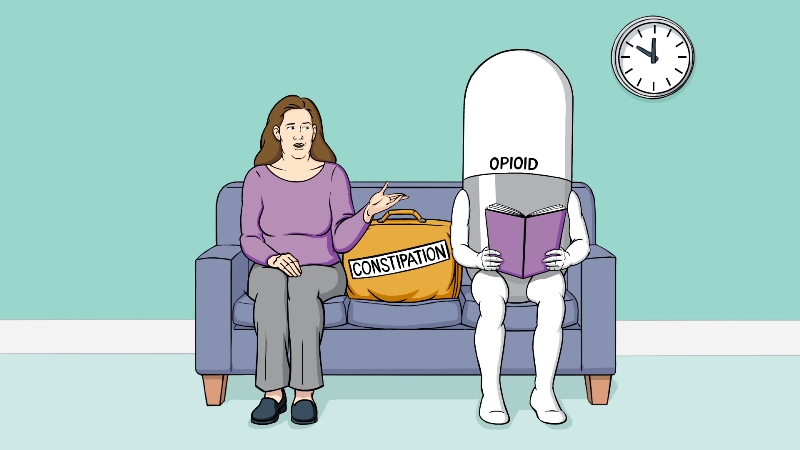
As the prescription painkiller epidemic continues to take lives across the country, why is a (sort of) cute cartoon advertisement for the opioid-induced constipation treatment drug Movantik being advertised during NFL games?
Titled Opioid Baggage, the cartoon ad shows a heavy middle-aged woman carrying around an overstuffed suitcase labeled constipation. A huge anthropomorphic capsule labeled OPIOID shadows her like a worried best friend.
Considering how the NFL has had a long history with prescription drug abuse, it is surprising to see a 60-second ad for any prescription product. In addition, given the pain being suffered by families that have lost loved ones to prescription painkiller overdoses, it seems callous for such an ad to be promoted during football games. Moreover, the cartoon take on the problem lessens the dangers of prescription painkillers by turning them into a Disney-like character. As opposed to Pixar’s Monsters, Inc., the Prescription, Inc., feeling of the commercial verges on the offensive.
In 2014, the FDA approved Movantik (naloxegol) as an oral treatment for opioid-induced constipation in adults with chronic non-cancer pain. At the time of approval, Julie Beitz, M.D., director of the Office of Drug Evaluation III in the FDA’s Center for Drug Evaluation and Research, said: “Supportive care products such as Movantik can lessen the constipating side effects of opioids.”
A common side effect associated with the use of prescription painkillers is the reduction of the gastrointestinal tract’s motility, making bowel movements difficult and causing patients to strain to go to the bathroom because of hard or lumpy stools. Many are unable to have bowel movements for days at a time, and Movantik treats this condition. AstraZeneca Pharmaceuticals LP, based in Wilmington, Del., developed and now distributes the drug.
There is no question that AstraZeneca Pharmaceuticals LP is promoting a needed drug, but the company does not seem to realize the possible negative effects. In response to the advertisement, several drug abusers and addicts have taken to social media to vent frustrations about the commercial. In addition, a hashtag search for the drug on Twitter reveals a wave of negativity.
Ultimately, such an advertisement is a callous misjudgment by a company placing profits over people. They are providing motivation to drug users to continue their abuse while making light of the tragic impact of a national epidemic.